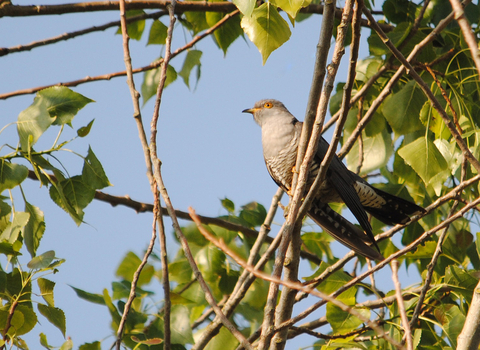
©Amy Lewis

©David Tipling/2020VISION

©David Tipling/2020VISION
Cuckoo
Considered to be an early sign of spring, the song of the cuckoo sounds the same as its name: ‘cuck-oo’. It can be heard in woodlands and grasslands. Cuckoos famously lay their eggs in the nests of other birds.
Scientific name
Cuculus canorusWhen to see
March to AugustSpecies information
Statistics
Length: 32-34cmWingspan: 58cm
Weight: 110-130g
Average lifespan: 4 years
Classified in the UK as Red under the Birds of Conservation Concern 5: the Red List for Birds (2021). Priority Species under the UK Post-2010 Biodiversity Framework. Listed as Vulnerable on the global IUCN Red List of Threatened Species.
About
A cuckoo is a summer visitor to Britain, arriving from Africa in late March and April. They are famous for laying their eggs in other birds’ nests, fooling them into raising their young. Dunnocks, meadow pipits and reed warblers are common victims of this. Young cuckoo chicks grow much bigger than their unsuspecting foster parents and will often push any other eggs out of the nest. Young and adult cuckoos like to eat all kinds of insects, but hairy caterpillars are their favourites!How to identify
Cuckoos are sometimes mistaken for sparrowhawks due to their markings: blue-grey backs and heads, with striped, dark grey and white undersides. They have long tails and pointed wings and a hawk-like shape in flight.Distribution
A widespread summer visitor.In our area
You may hear a cuckoo calling at the Stiperstones in the south of the county and at Whixall Moss in the north.
Did you know?
Young cuckoos often grow much bigger than their host parents, so they require a lot more food and attention than the host's rightful chicks. To this end, they will push their host's eggs or chicks out of the nest.Watch
Cuckoo (https://vimeo.com/642769824)
Russell Savory
You may hear a cuckoo calling at the Stiperstones in the south of the county and at Whixall Moss in the north.

